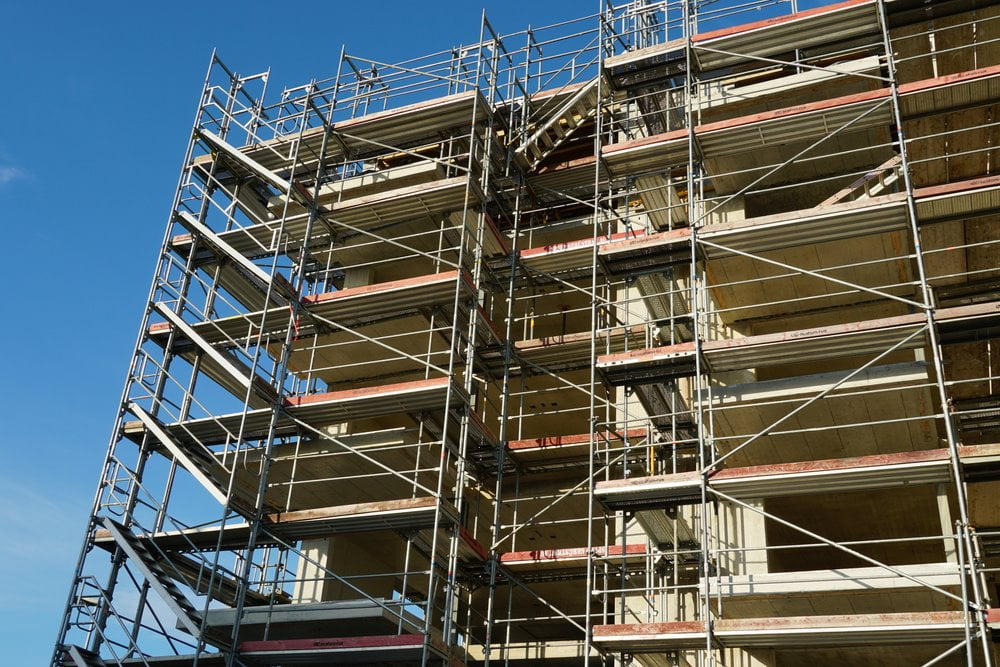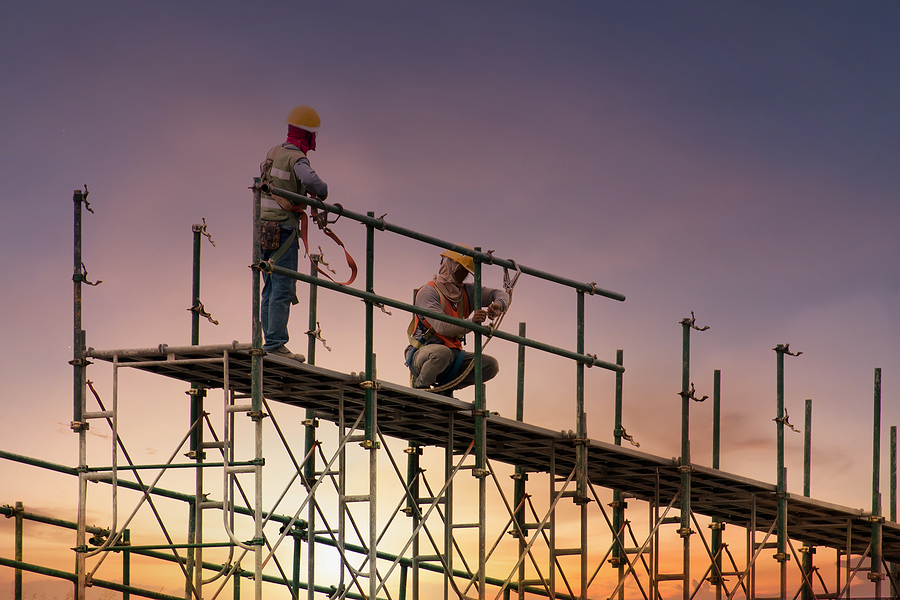Choosing a Local Scaffolding Company for Reliable and Timely Service
Choosing a Local Scaffolding Company for Reliable and Timely Service
Blog Article
Discovering the Different Types of Scaffolding Used in Building Jobs
The building industry depends heavily on numerous types of scaffolding to meet details job requirements, each offering distinctive advantages and applications. Conventional structure scaffolding offers a durable structure for general jobs, while suspended scaffolding is important for job on high-rise frameworks. Other alternatives, such as system and rolling scaffolding, accommodate performance and movement, specifically. The cantilever alternative shows very useful in metropolitan settings where space is constrained. Recognizing the nuances of these scaffolding types is essential for optimizing security and efficiency on construction sites, triggering a more detailed evaluation of their special characteristics and applications.

Conventional Frame Scaffolding
Typical framework scaffolding is among the most extensively used methods in the building and construction market because of its robustness and versatility. This system is composed of horizontal and upright frameworks that are assembled to develop a stable system for workers and products. The primary parts include upright messages, straight ledgers, and angled braces, which with each other offer a strong structure that can support substantial loads.
Among the key advantages of typical frame scaffolding is its adaptability to numerous building and construction tasks, varying from residential structures to large industrial frameworks. The modular design permits simple assembly and disassembly, making it reliable for both lasting and temporary projects. Furthermore, the system can be personalized in height and size, accommodating various structure styles and site problems.
Security is vital in scaffolding applications, and typical frame systems are equipped with guardrails and toe boards to stop falls and ensure employee defense. Moreover, regular examinations and adherence to safety regulations are vital in keeping the stability of the scaffold. Generally, conventional frame scaffolding continues to be a basic choice in the building industry, supplying a trustworthy system for labor and boosting general project effectiveness

Suspended Scaffolding
Suspended scaffolding offers an unique remedy for building and construction projects that call for access to elevated surface areas, specifically in situations where conventional frame scaffolding might be not practical. This kind of scaffolding is generally suspended from the roof or upper levels of a framework, using a system of wheels, ropes, and platforms to produce a functioning area that can be gotten used to numerous elevations.
Among the main benefits of put on hold scaffolding is its adaptability. It can be easily repositioned or lowered to accommodate changes in building and construction requirements, making it excellent for tasks such as home window installation, frontage job, and maintenance on high-rise buildings. In addition, the very little footprint of put on hold scaffolding permits for far better use of ground area in urban atmospheres, where area is typically limited.
Security is an essential consideration in making use of suspended scaffolding. Proper rigging and securing systems need to be discover this utilized to guarantee security and stop mishaps. Operators should additionally be educated in the secure use this equipment. On the whole, suspended scaffolding gives a efficient and efficient option for accessing hard-to-reach areas in numerous building situations, improving both efficiency and safety on site.
System Scaffolding
System scaffolding, typically considered a modern solution in the scaffolding market, includes pre-engineered elements that can be promptly assembled and adjusted for numerous building jobs. Scaffolding. This kind of scaffolding is characterized by its modular style, which permits adaptability and performance on job websites, accommodating structural requirements and various heights
Typically made from high-strength steel or light weight aluminum, system scaffolding supplies enhanced longevity and stability. The components include upright blog posts, straight journals, and diagonal dental braces, which interconnect safely, ensuring a robust structure. The layout often integrates standardized fittings, streamlining setting up and disassembly procedures, therefore decreasing labor time and prices.

Rolling Scaffolding
Moving scaffolding is a functional option to typical fixed scaffolding, created for mobility and ease of usage on construction sites. This type of scaffolding contains a platform supported by frameworks with wheels, enabling workers to easily move it as needed. The flexibility attribute considerably boosts efficiency, as it minimizes downtime connected with dismantling and constructing fixed scaffolding.
Generally built from light-weight materials such as aluminum or steel, rolling scaffolding provides a tough yet mobile option for tasks calling for regular repositioning - Scaffolding. It is particularly beneficial in jobs such as painting, drywall installation, and electric work, where accessibility to different elevations and areas is essential
Safety is vital in rolling scaffolding style, with features such as securing wheels to prevent unintended motion when in use, and guardrails to secure employees from drops. In addition, lots of versions are flexible in elevation, suiting various project needs.
Cantilever Scaffolding

The style of cantilever scaffolding usually involves making use of brackets or arms anchored to a building or structure, enabling the system to prolong external safely. Safety is paramount; thus, these scaffolds need to be crafted to stand up to environmental problems and various tons. Regular evaluation and upkeep are important to make sure structural honesty and employee safety and security.
Cantilever scaffolding is preferred for its adaptability and efficient use space, making it a preferred choice in urban settings where room restrictions prevail. It assists in easier accessibility to high elevations, eventually adding to the general effectiveness of construction jobs. Just like all scaffolding types, appropriate training and adherence to safety and security requirements are essential for employees utilizing cantilever scaffolding.
Conclusion
Conventional structure scaffolding gives stability, while suspended scaffolding offers convenience for raised tasks. System scaffolding assists in fast setting up, and rolling scaffolding improves movement for varying work settings.
Typical frame scaffolding gives a tough structure for general tasks, while put on hold scaffolding is crucial for work on skyscraper frameworks.Rolling scaffolding is a functional option to traditional set scaffolding, developed for flexibility and simplicity of usage on building and construction sites. As with all scaffolding kinds, proper training and adherence to safety and security standards are critical for employees utilizing cantilever scaffolding.
Standard frame scaffolding supplies stability, while suspended scaffolding supplies versatility for raised tasks. System scaffolding assists in fast assembly, and rolling scaffolding boosts mobility for differing job environments.
Report this page